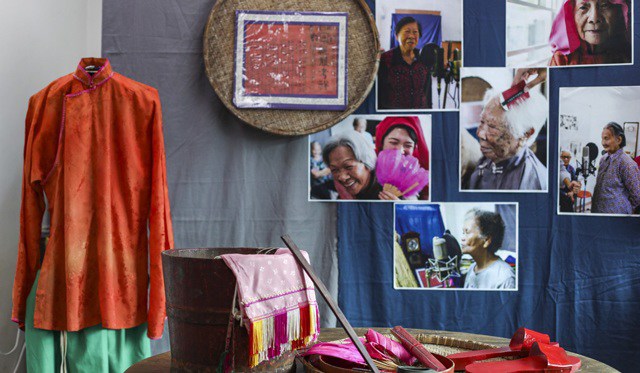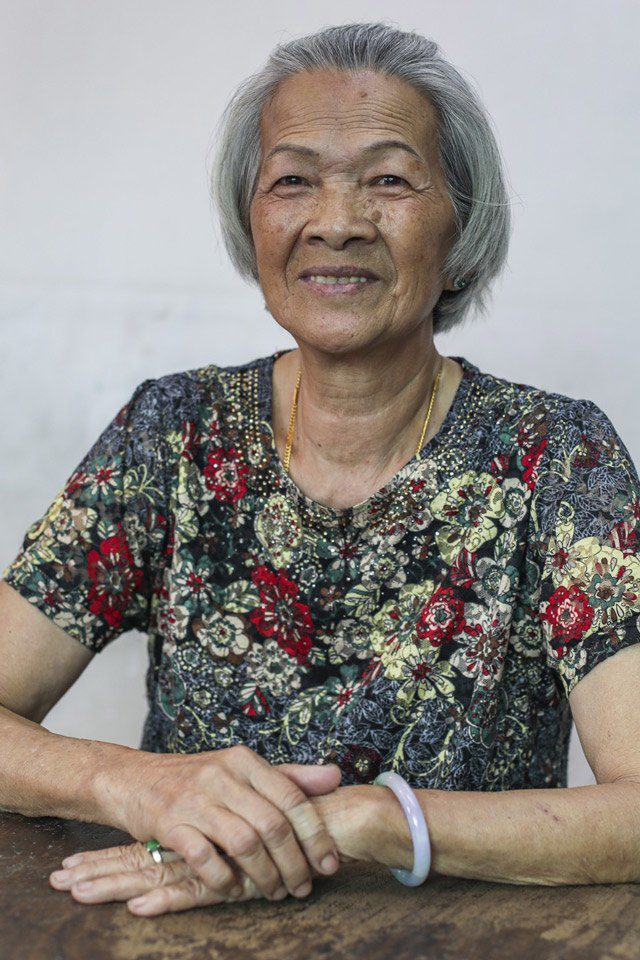In the 1960s, in the rural areas of Hong Kong, a strange custom was maintained. At that time, most marriages were due to matchmaking. Most young girls do not know the face of their future husbands. Before going to their husband’s house, they would sing lamentation songs to resent the matchmaker.
Hong Kong-based activists in the Caritas Lung Yeuk Tau Community Development Project have spent decades researching the lives of Lung Yeuk Tau women. Then, they distilled the research results in a documentary called “Yesterday Once More” to convey to the public.
In the film, 7 remaining women of the old generation gather in San Uk Tsuen. They shared stories about their lives, re-singing lamentations before leaving their parents and returning to their husband’s house.

Ms. Liu Kam-lan
Mrs. Liu Kam-lan opened the conversation with a song of lamentation by the bride in Weitou. This is the dialect used by the inhabitants of Lung Yeuk Tau since the Song Dynasty (960-1279) and so far only the elderly know.
According to the lyrics, more than 60 years ago, Mrs. Liu was still a young girl, but soon she was married away from home. In her last days with her parents, she lay in her attic, weeping bitterly while her friends came to say goodbye. Thanks to matchmaking, Ms. Liu married a man she had never met. Soon, the young girl will return to be a bride in someone’s house, leaving her parents and the village forever.
It was not only Mrs. Liu’s fate but the common life of most Weitou women at that time. All their resentment and resentment towards the matchmaker is put in the lyrics of lamenting songs.

Weitou traditional bridal dress
Most of the Weitou women at that time were not able to attend school. They passed word of mouth lamentation songs from generation to generation. Such a tradition of matchmaking was also maintained in the rural areas of Hong Kong during that period. The matchmakers will look for young girls of age to introduce them to men in other villages.
According to research by the NGO Caritas, not all arranged marriages are bad. However, many of these women live unhappy lives, spending their whole lives just obeying and serving their husband’s family. It was only when the husband died that they found their freedom in the last years of their lives.
When the Caritas organization reached out, the women of the older generation were initially reluctant to share their stories. They think that their life is only full of tragedy, hard work, nothing worth talking about. But then, they began to open up more, began to share about the lamentation songs of the bride. It can be seen that the Caritas project itself has greatly helped the people of Lung Yeuk Tau celebrate their culture and raise their self-esteem.

Mrs. Leung Siu-ha
The Lung Yeuk Tau area has 5 villages with a history of more than 700 years. Time has changed this place a lot because the rice fields have now turned into high-rise buildings, modern parking lots. The fate of man is no longer the same as before.
The old women excitedly told their stories. Most of them have experienced a life of hardship, deprivation and unhappy marriage.
Ms. Man Kam-hop, the oldest of the group, said: “I grew up in San Tin village, at the age of 9 I started working to help my parents and couldn’t go to school. All the children are like that. The whole family grows rice and I tend to herd buffaloes.” Thinking back to her childhood, Mrs. Man Kam-hop only feels hard and miserable. It was also because she rode on buffalo like a man every day that she did not become the target of the village boys.
Mrs. Leung Siu-ha’s story is also heavy. At the age of 20, she moved from Shenzhen to Hong Kong on the recommendation of a relative. As a child, her family was very rich, owning a fireworks factory, and in the house there were servants and servants. But after 1949, her fortune was confiscated from the public funds, she suffered from poverty, ate less than a bowl of rice all day, and had to eat sweet potatoes except for meals.

The Last Women of the Weitou Marriage Matchmaking
When she got married through matchmaking, Mrs. Leung was like many other young brides. “I was just told to obey my husband and obey his in-laws. Nothing else, just obey,” she recalls. Before returning to her husband’s house, Mrs. Leung spent four nights in the attic, crying until her tears were gone.
Ms. Man Fung-king, from San Tin village, also experienced an arranged marriage. The first time she met her future husband at a restaurant, Man Fung-king was 17 years old, extremely scared and worried. Relatives of both sides also surrounded the young couple at that meeting and after a while, Mrs. Fung-king returned to be his wife’s bride. 3 days before the wedding, the bride’s friends came to comfort her. Mrs. Man Fung-king and her friends could only sit in the attic and cry and sing together.
The custom of arranged marriage is now gone and the lamenting songs of the bride are also in the past. If it weren’t for this documentary, perhaps the songs would have completely disappeared when this generation was gone. Thanks to them and their songs, we get to see a part of the history and fate of women in the past.
at Blogtuan.info – Source: Eva.vn – Read the original article here



